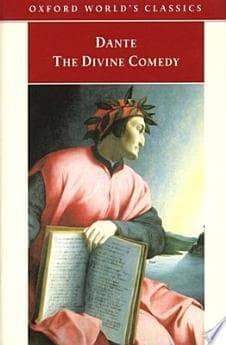- Published on
The Divine Comedy
- Authors

- Name
- Dante Alighieri
- @search?q=Dante Alighieri

The Divine Comedy by Dante Alighieri (Herbert A. Kenny, Translator)
Overview
"The Divine Comedy" is an epic poem by Dante Alighieri, masterfully translated by Herbert A. Kenny. It's one of the most significant literary works in the Western canon and an enduring symbol of Italian literature. The poem is an imaginative and allegorical vision of the afterlife, representing the soul's journey towards God.
Structure
The work is divided into three major sections:
- Inferno (Hell): Dante's journey through the nine circles of Hell, guided by the ancient Roman poet Virgil.
- Purgatorio (Purgatory): The ascent of Mount Purgatory, where souls are cleansed and prepared for Heaven.
- Paradiso (Paradise): Dante's exploration of Heaven, culminating in a vision of God.
Themes
- Moral and Ethical Judgment: Each realm reflects the soul's relation to sin and virtue.
- Divine Justice: The poem intricately details punishments and rewards, reflecting Dante's conception of divine justice.
- Political Commentary: Dante comments on the political and religious turmoil of his time.
- Spiritual Quest: Symbolizes the soul's journey towards God and the struggle between good and evil.
Key Characters
- Dante: The protagonist and narrator, representing humanity.
- Virgil: Dante's guide through Hell and Purgatory, symbolizing human reason.
- Beatrice: Dante's guide through Paradise, representing divine love and grace.
Significance
- A masterpiece of world literature, Dante's work has influenced countless poets, writers, and thinkers.
- Its vivid imagery, philosophical depth, and moral complexities continue to captivate readers.
Conclusion
"The Divine Comedy" is not just a literary piece but a timeless spiritual journey. Its exploration of themes like morality, redemption, and divine justice makes it relevant across centuries.
